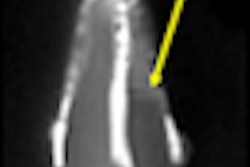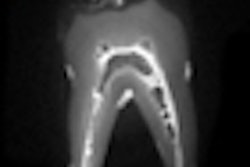Boston University School of Medicine researchers have begun to define the precise mechanisms contributing to the link between infection with Porphyromonas gingivalis and atherosclerotic disease.
In a study published online in Atherosclerosis (December 22, 2010), Caroline Genco, PhD, and James Hamilton, PhD, used in vivo high-resolution MRI to document P. gingivalis mediated inflammation and atherosclerosis in a mouse model.
They demonstrated that P. gingivalis infection accelerates inflammation and atherosclerosis in the innominate artery, an artery that has a high degree of lesion progression. Lesions in the innominate artery express features characteristic of clinical disease in humans, including vessel narrowing characterized by atrophic media and perivascular inflammation and plaque disruption.
This research is the first to use in vivo MRI to demonstrate progression of plaque in the innominate arteries following exposure to an infectious agent and to document protection from plaque progression via immunization, Genco and her colleagues noted.
An important question is whether P. gingivalis accelerates atherosclerotic plaque formation in the innominate artery, leading to increased numbers of vulnerable plaques and possibly enhanced plaque rupture, they added. Future studies will explore this possibility and also the testing of new therapeutic strategies to prevent infection-induced atherosclerotic disease.
Copyright © 2011 DrBicuspid.com



















